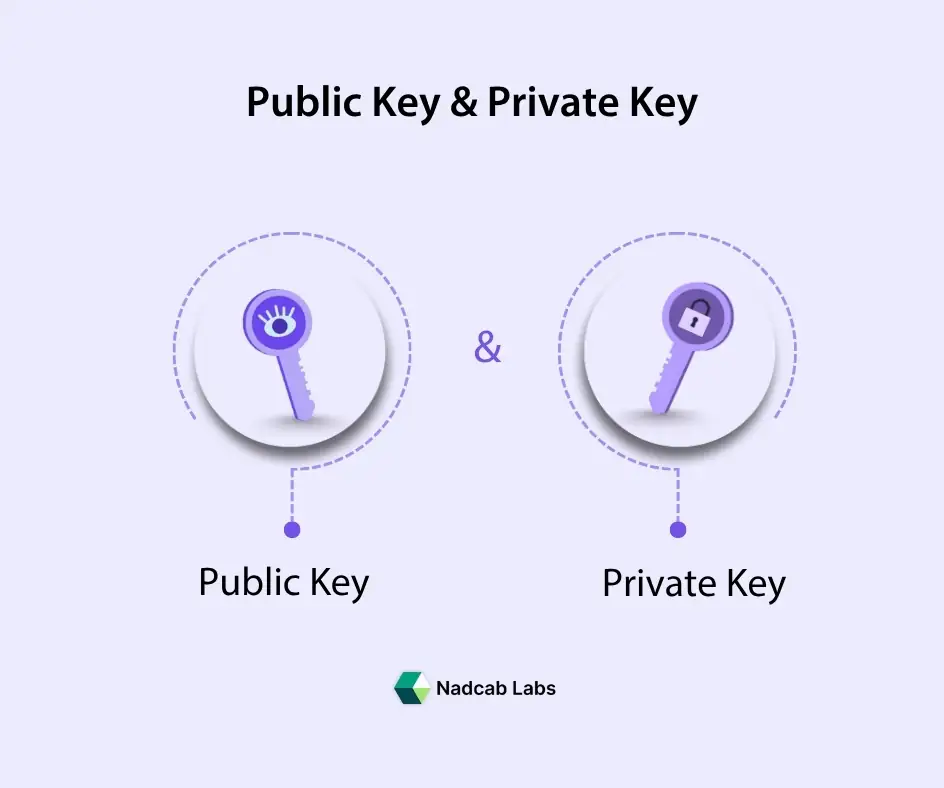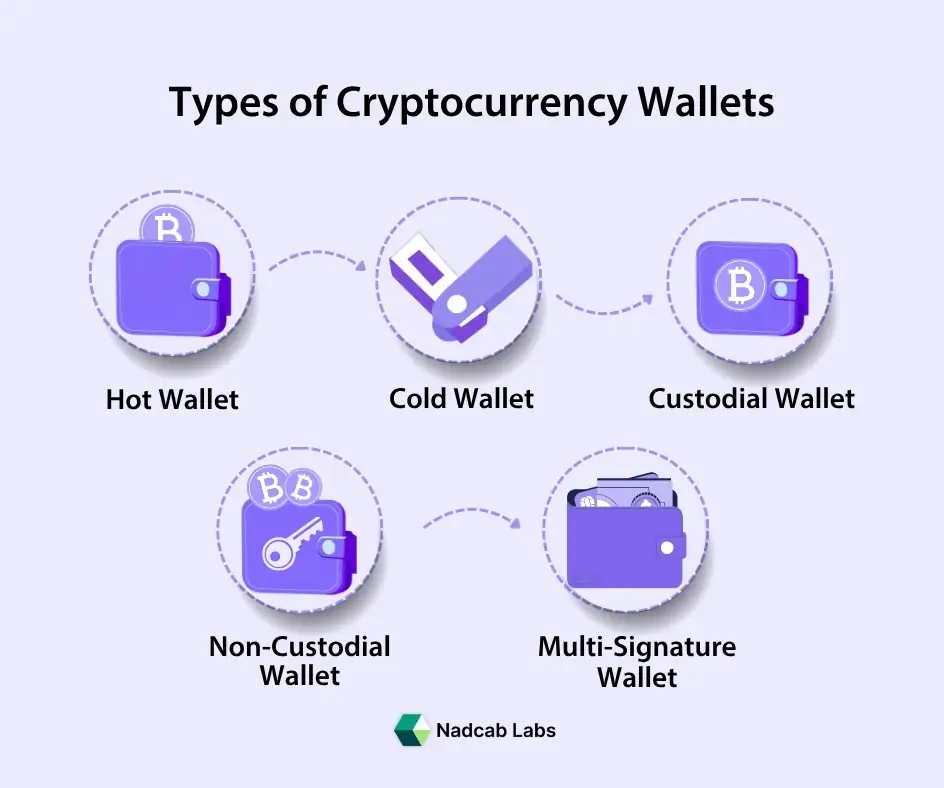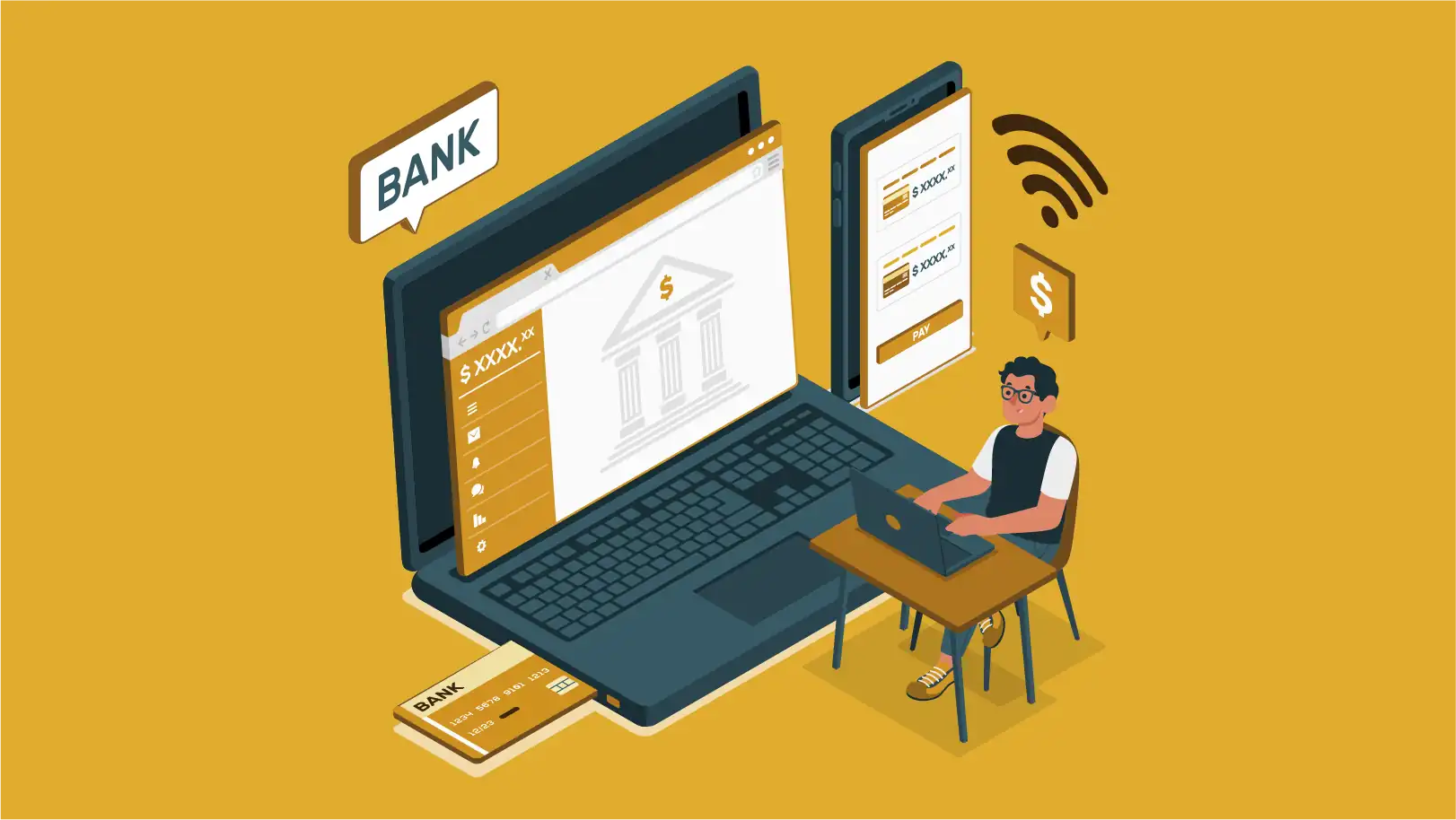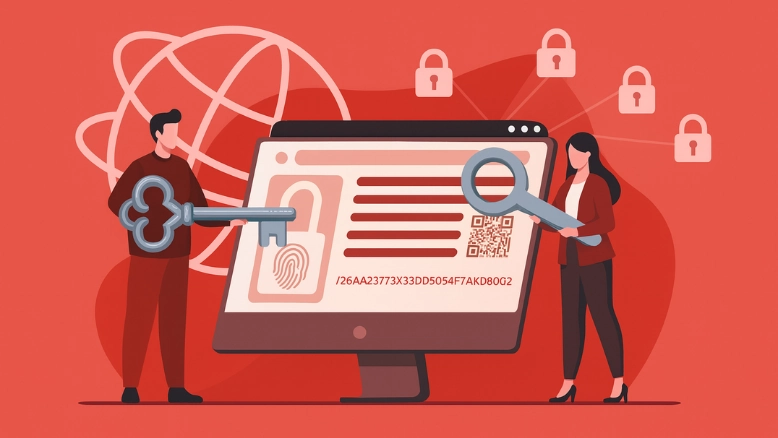
Crypto wallets are designed to store your private key, keeping your crypto accessible at all times. They also allow you to send, receive, and spend cryptocurrencies like Bitcoin and Ethereum. For anyone stepping into the world of crypto, the first thing to understand is the wallet. But it’s not the kind you slip into your pocket or handbag. Instead, it’s something far more advanced, a digital vault that keeps your crypto safe, private, and completely under your control.
A cryptocurrency wallet acts as your personal bridge to the blockchain, the powerful technology that redefines how we see money, ownership, and identity. It’s what connects your digital assets to you, giving you the ability to send, receive, and store crypto securely.
So how does it really work? Why has it become such a vital part of the crypto ecosystem? Let’s uncover it step by step, from understanding what a wallet truly is to exploring how it functions, the different types available, and the best ways to keep it secure.
What is Cryptocurrency Wallet?
At its core, a cryptocurrency wallet is a digital tool that allows users to store, send, and receive digital assets securely. But contrary to what its name might suggest, the wallet doesn’t actually “store” cryptocurrencies. The coins themselves are always on the blockchain, a decentralized digital ledger that records every transaction ever made.
What the wallet does store are the private and public keys, which are the cryptographic credentials that allow you to access your digital assets.
According to Britannica on cryptocurrency wallets,[1] a crypto wallet acts like a “digital keychain,” enabling users to interact with blockchain networks. Every wallet, regardless of its design, fulfills one key purpose: it connects you to your crypto holdings on the blockchain securely and privately.
Why a Cryptocurrency Wallet Is So Important
Beyond the technicalities, crypto wallets represent freedom and control, two emotions deeply tied to the human spirit. For decades, financial control was centralized in banks and governments. But a crypto wallet flips that narrative.
It gives you sovereignty over your wealth. No bank approvals, no middlemen, and no arbitrary limits. The power to hold, move, or trade your assets lies purely in your hands. This sense of independence is what draws millions to the crypto space; it’s more than finance, it’s empowerment.
How a Cryptocurrency Wallet Actually Works
The magic of a cryptocurrency wallet lies in how it connects cryptography, mathematics, and user-friendly design into one secure system. To understand it better, let’s dive into the key elements that make a crypto wallet work.

1. Public Keys and Private Keys
Every cryptocurrency wallet runs on a system of two digital keys:
a public key and a private key.
- Public Key: This acts like your wallet’s address. You can safely share it with anyone who wants to send you crypto. Think of it like your UPI ID or bank account number, public, visible, and safe to share.
- Private Key: This is your secret access code. It’s what proves you own the crypto associated with your public address. You should never share this key with anyone. It’s like the PIN or password that gives you full control over your funds.
When you create a wallet, both of these keys are generated automatically. Together, they make sure only you can access and authorize transactions from your wallet.
If someone else gets hold of your private key, they basically own your wallet. No password resets, no customer support, your funds could be gone forever. That’s why private key protection is everything in crypto.
2. How Transactions Work
When you send cryptocurrency from your wallet to someone else, here’s what happens behind the scenes:
- You enter the recipient’s wallet address (their public key).
- Your wallet creates a digital signature using your private key.
- This signature verifies that you are the rightful owner of those funds and that the transaction is valid.
- The transaction is then broadcast to the blockchain network, where thousands of computers (called nodes) verify and confirm it.
- Once verified, the transaction becomes a permanent part of the blockchain ledger. It cannot be changed or deleted.
This entire process usually happens in seconds or minutes, depending on the blockchain (for example, Bitcoin takes longer than Solana or Polygon).
Note:
Your wallet signs the transaction, the blockchain verifies it, and your crypto moves securely to the new address.
3. How Wallets Connect with the Blockchain
The blockchain itself doesn’t “store” your wallet or balances directly. It just keeps records of all transactions ever made.
Your wallet acts like a window or interface that lets you see and interact with those records. When you open your wallet app and check your balance, what’s really happening is:
- Your wallet connects to blockchain nodes.
- It reads your wallet address’s transaction history.
- It calculates how much crypto you own (your total balance).
So your coins aren’t “inside” your wallet; they’re on the blockchain. The wallet just helps you access them securely.
4. Wallet Addresses and How They’re Generated
Your wallet address is a unique identifier created from your public key. It usually looks like a long string of numbers and letters, for example:
0xABCD56F7891234EF…
Each wallet address is unique, and even a single character change makes it completely different. That’s what makes blockchain transactions secure and traceable.
When someone sends crypto to your wallet address, they’re sending it to that specific spot on the blockchain that’s tied to your public key. Only your private key can unlock and move those funds again.
5. Wallet Interfaces and User Experience
If all this sounds super technical, don’t worry. Modern wallets hide most of the complexity.
The interface you see (like MetaMask, Trust Wallet, or Ledger Live) makes it easy to:
- View your balances
- Send or receive crypto
- Check past transactions
- Connect to decentralized apps (DApps)
Behind every “Send” or “Receive” button, complex cryptography and blockchain processes are working silently to ensure your funds stay secure.
It’s like driving a Tesla. You just press a button, but there’s a powerful system running underneath making it smooth and safe.
6. The Importance of Seed Phrases
When you first create a wallet, it gives you a seed phrase, usually 12 or 24 random words.
Example:
apple moon silver train bridge token dream water light star echo peace
This phrase is your master key. If you ever lose your phone, laptop, or even the wallet app, this phrase can recreate your wallet and recover all your crypto from the blockchain.
That’s why experts always say:
“Write it down, store it offline, and never share it with anyone.”
Your seed phrase is your wallet. Whoever has it controls everything inside.
Types of Cryptocurrency Wallets
Just as there are different ways to keep traditional money, from banks to safes, there are different types of crypto wallets. Each offers a unique balance between convenience and security.

1. Hot Wallets (Online Wallets)
Hot wallets are connected to the internet, which makes them easy to use but more vulnerable to hacking. They are ideal for beginners and traders who need quick access to their assets.
Types of hot wallets include:
- Web wallets: Hosted on cloud services or exchanges like Coinbase or Binance.
- Mobile wallets: Apps that allow users to store and manage crypto on their phones.
- Desktop wallets: Software installed on computers for managing crypto locally.
While convenient, users must ensure strong passwords, two-factor authentication, and secure devices to reduce risks.
2. Cold Wallets (Offline Wallets)
Cold wallets, on the other hand, remain disconnected from the internet, making them the most secure option for long-term storage.
Examples include:
- Hardware wallets: Physical devices like Ledger or Trezor that store private keys offline.
- Paper wallets: Printed QR codes representing wallet addresses and private keys.
Cold wallets are less convenient for frequent trading but ideal for investors focused on long-term safety.
3. Custodial vs Non-Custodial Wallets
Custodial wallets are managed by third-party services (like exchanges), which hold your private keys for you. This is easy for beginners but somewhat compromises ownership.
Non-custodial wallets, however, give users full control over their keys and assets. No one can access or freeze your funds.
Coinbase explains [2] this perfectly the wallet acts as the interface to the blockchain, making the process of transferring and managing digital assets simple and secure, even for non-technical users.
4. Multi-Signature Wallets
For businesses or large transactions, multi-signature wallets add another layer of protection. These wallets require multiple private keys (for example, two out of three) to approve a transaction. It prevents misuse and promotes collective control.
Setting Up a Cryptocurrency Wallet – Step-by-Step
Setting up a crypto wallet is surprisingly simple but requires careful attention. Here’s a standard process to get started safely:
- Choose the right wallet (hot or cold) based on your needs.
- Download or purchase the official wallet application or hardware.
- Create a new wallet, which automatically generates your public and private keys.
- Backup your seed phrase, a recovery phrase consisting of 12 to 24 random words.
- Enable security settings, including biometric locks or two-factor authentication.
- Test your wallet by sending a small amount of crypto first.
Following these steps ensures you control your digital assets with confidence.
Turn Your Wallet into a Trustless Ecosystem
Partner with Nadcab Labs to make your crypto wallet truly yours, secure, transparent, and powered by community trust.
Security in Cryptocurrency Wallets
One of the biggest emotional challenges in crypto ownership is trusting yourself with your own security. Unlike traditional banking, where you can call customer support to reset a password, blockchain ownership is absolute; lose your private keys, and you lose access to your funds forever.
That’s why wallet security isn’t just technical; it’s psychological. You’re not only managing assets; you’re managing responsibility.
Security Tips:
- Keep backups of your seed phrase offline.
- Never share your private key with anyone.
- Avoid using wallets on public Wi-Fi.
- Keep hardware wallets in secure locations.
- Regularly update wallet software to patch vulnerabilities.
As Investopedia explains in its Bitcoin Wallet guide[3]
, understanding this difference is crucial — because, in crypto, “not your keys, not your coins.”
[Also Read: Step-by-Step Process for Developing a Web3 Crypto Wallet]
Challenges and Risks
Owning a cryptocurrency wallet gives you independence, but that independence comes with real responsibility. While it’s exciting to manage your own assets, it also means you carry the full weight of security and awareness. Let’s look at some of the major challenges and risks every wallet user should understand.
-
Irreversible Transactions
In crypto, every transaction is final. Once sent, it can’t be undone or recalled, even if it was a mistake. This makes attention to detail vital; one wrong address or a small oversight could mean losing your funds forever.
-
Loss of Private Keys
Your private key is your ultimate proof of ownership. If you lose it, there’s no recovery or customer service to help. That’s why safely backing up your keys or seed phrases in secure, offline places is absolutely essential.
-
Hacking and Phishing Attacks
Cybercriminals are always searching for ways to exploit wallet users. From fake wallet apps to phishing emails, one wrong click can expose your funds. Staying alert, using two-factor authentication, and downloading wallets only from trusted sources can keep you safe.
-
Fake Wallets and Scams
Many scams appear as attractive offers or new wallet tools promising quick rewards. Once installed, they steal your data and crypto. Always research carefully, check reviews, and never trust any wallet that seems too good to be true.
-
Device and Network Vulnerabilities
Even if your wallet is secure, an infected phone or laptop can compromise it. Public Wi-Fi, malware, or outdated software can expose sensitive data. Regular updates, antivirus tools, and secure internet connections go a long way in preventing breaches.
-
Human Error
Most crypto losses happen not because of hackers, but because of simple human mistakes. Forgetting passwords, mixing up addresses, or deleting wallet apps can cause irreversible damage. Slow down, double-check everything, and treat every transaction with care.
Managing a cryptocurrency wallet is like holding digital gold, precious, powerful, and deeply personal. The risks are real, but so is the freedom it brings. With awareness and discipline, and by choosing custom cryptocurrency wallet solutions designed for your specific needs, you don’t just protect your assets; you strengthen your trust in the future of decentralized finance.
What’s Next for Cryptocurrency Wallets
As blockchain technology evolves, wallets are evolving too. The next generation of wallets will integrate AI-based fraud detection, biometric authentication, and multi-chain interoperability, allowing users to manage all assets across different blockchains in one place.
Moreover, with Web3 and the Metaverse expanding, wallets will become more than financial tools; they’ll become digital identities, giving users access to decentralized apps, games, and virtual worlds.
We’re moving toward an era where your crypto wallet won’t just hold your money; it will hold your digital life.
Get Your Crypto Wallet Today!
A cryptocurrency wallet is far more than a piece of software or hardware; it’s a symbol of trust, empowerment, and self-reliance in the digital age. It allows anyone, anywhere, to own and manage their wealth independently, without the need for third parties.
The emotional connection users form with their wallets mirrors a new kind of financial consciousness, one built on freedom, transparency, and technology.
So, as you step into this evolving world of digital finance, remember:
Your wallet is not just where your crypto lives; it’s where your financial independence begins.
Frequently Asked Questions - Wallet
A cryptocurrency wallet is a secure digital tool that helps users store, send, and receive cryptocurrencies safely. It doesn’t physically hold coins but stores the private keys that provide access to your assets on the blockchain. In simpler words, it’s like a digital keychain that keeps your crypto safe and accessible whenever you need it.
Every crypto wallet has two keys — a public key and a private key. The public key acts like your wallet address (which you can share to receive funds), while the private key is your secret password that allows you to access and transfer your assets. When a transaction occurs, the wallet uses your private key to sign it, verifying that you are the rightful owner. This transaction is then recorded permanently on the blockchain network.
Hot wallets are connected to the internet, making them ideal for frequent trading and instant transactions. They include web, mobile, and desktop wallets. Cold wallets, on the other hand, stay offline — such as hardware or paper wallets — offering higher security for long-term storage. Hot wallets are about convenience, while cold wallets are all about maximum safety.
Unfortunately, if you lose your private key or recovery phrase, it’s nearly impossible to regain access to your funds. The blockchain system is designed to be decentralized and secure, which means there’s no central authority to help you recover lost keys. That’s why experts always recommend backing up your recovery phrase and storing it in multiple safe locations.
Yes, crypto wallets are safe when handled responsibly. The level of security depends on the type of wallet and how you protect it. Hardware wallets are considered the most secure because they’re offline, while mobile and web wallets require additional security measures like strong passwords, two-factor authentication, and awareness against phishing attempts.
Beginners should start with simple and user-friendly wallets that offer clear navigation and basic security features. Mobile or web wallets are great starting points since they are easy to set up and help you understand how crypto transactions work. As you gain experience, you can switch to more secure options like hardware or multi-signature wallets for larger investments.
Reviewed By

Aman Vaths
Founder of Nadcab Labs
Aman Vaths is the Founder & CTO of Nadcab Labs, a global digital engineering company delivering enterprise-grade solutions across AI, Web3, Blockchain, Big Data, Cloud, Cybersecurity, and Modern Application Development. With deep technical leadership and product innovation experience, Aman has positioned Nadcab Labs as one of the most advanced engineering companies driving the next era of intelligent, secure, and scalable software systems. Under his leadership, Nadcab Labs has built 2,000+ global projects across sectors including fintech, banking, healthcare, real estate, logistics, gaming, manufacturing, and next-generation DePIN networks. Aman’s strength lies in architecting high-performance systems, end-to-end platform engineering, and designing enterprise solutions that operate at global scale.





